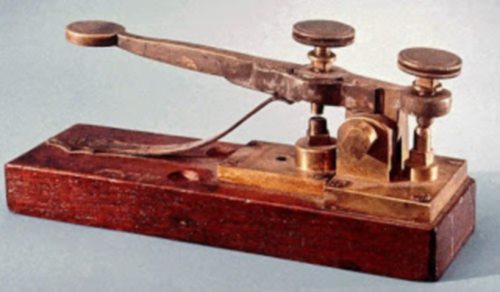When it comes to alternative languages, Morse Code is probably the best known particularly for survival. Even people who know nothing about preparedness or Morse Code still know the old “S.O.S.” emergency signal, after all. However, few people really know this valuable language well enough to communicate beyond that simple phrase which means that it is important that you learn it and be ready to use it during any major emergency.
After all, when rescue teams are searching around to assist people or if you need to communicate somewhat confidentially, what better to use for communication than Morse Code?
How it works
Although you can read the chart below to learn the alphabet in Morse Code, it won’t do you much good without knowing how to properly transmit or how each letter actually sounds. Learnmorsecode.com has an excellent series of audible guides that will help you hear the letters, which is generally more useful and faster than trying to transfer what you see in the alphabet into sound later.
As for knowing how to transmit properly, follow these rules to assist others who are hearing you:
- Don’t send faster than you can receive. This helps experienced listeners to avoid spamming out letters at newbies who are still trying to learn, and is also a helpful way to say “slow down” without needing to know how to type that out. Furthermore, remembering this rule keeps you from going too fast for the message to be written down which is the usual method of understanding Morse conversations.
- Have basic practice under your belt before transmitting to the wider world. Many HAM Radio operators use Morse Code for fun, and broadcasting imperfect, slow, and generally unintelligible drivel clogs up the airways. By all means listen even if you have little skill, but try to have at least a basic grasp before broadcasting yourself.
- Use the minimum power needed to communicate. This is actually part of FCC rules for anyone broadcasting, and it has a practical aspect as well since overpowered broadcasts can interfere with TVs and other devices. If “transmitting” by banging on rocks or flashing lights, variations on this rule could apply in order to minimize the chance of others hearing or seeing what you are doing.
- Be brief. Morse code is not often translated at faster than 20 words per minute. This makes a true conversation extremely tedious and annoying. As such, many “Q Codes” (so named because all begin with the uncommon letter Q) have been developed and are in common usage. It is usually expected that users can identify most of these codes, particularly ones related to using Morse Code itself, since they offer similar convenience that “text speech” does to phone users. Even with these codes, try to keep conversations very short to keep people from becoming annoyed.
- Patience. Get used to a slower pace with Morse Code and understand that it just comes with the territory. You’re already reduced to communicating by banging a rock on a wall or flashing lights, so don’t get anxious or you’ll probably screw up sending/receiving the messages.
The alphabet
I actually hesitate to post a Morse Code visual alphabet here since it could potentially slow learning, but then it can be advantageous to print it out for those who simply don’t know Morse Code and need to quickly transcribe a simple message. The chart below details the basic alphabet and the way of separating letters, words, and sentences from one another.
Secondary use
Although common Morse Code is at least a known language with a population that uses it, adapting a “secret code” from that language is quite easy and more difficult to riddle out. Abbreviations and certain phrases can all mean different things, giving you a convenient and simple way to talk without giving information out to any curious or sinister listeners. Just remember not to use abbreviations or codes already commonly used in your personal language, since you could confuse others you’re communicating with who are not part of your group.
Your thoughts?
Would you want to learn Morse Code? Do you have any tips for users? Let us know in the comments below!
Source: preparedforthat.com
OTHER USEFUL RESOURCES!
Mega Drought USA:(Discover The Amazing Device That Turns Air Into Water)-DIY
Survive The End Days (Biggest Cover Up Of Our President)
Survival MD (Best Post SHTF Medical Survival Guide Ever)
Blackout USA (EMP survival and preparedness guide)
Bullet Proof Home (A Prepper’s Guide in Safeguarding a Home )
Backyard Innovator (All Year Round Source Of Fresh Meat,Vegetables And Clean Drinking Water)-DIY
Conquering the coming collapse (Financial advice and preparedness )
Liberty Generator (Easy DIY to build your own off-grid free energy device)
Backyard Liberty (Easy and cheap DIY Aquaponic system to grow your organic and living food bank)
Family Self Defense (Best Self Defense Strategies For You And Your Family)
Sold Out After Crisis (Best 37 Items To Hoard For A Long Term Crisis)




Where do I find a unit like you have pictured? I would like to find one for my family and teach them how to use it.